
How to Use SHT40: Examples, Pinouts, and Specs
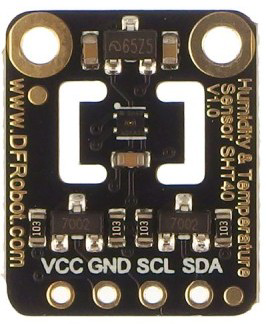
 Design with SHT40 in Cirkit Designer
Design with SHT40 in Cirkit DesignerIntroduction
The SHT40 is a digital humidity and temperature sensor designed for high accuracy and low power consumption. It is part of Sensirion's 4th generation of humidity sensors, offering improved performance in a compact form factor. The SHT40 communicates via an I²C interface, making it easy to integrate into a wide range of applications. Its small size and robust design make it ideal for use in HVAC systems, weather monitoring stations, IoT devices, and industrial automation.
Explore Projects Built with SHT40
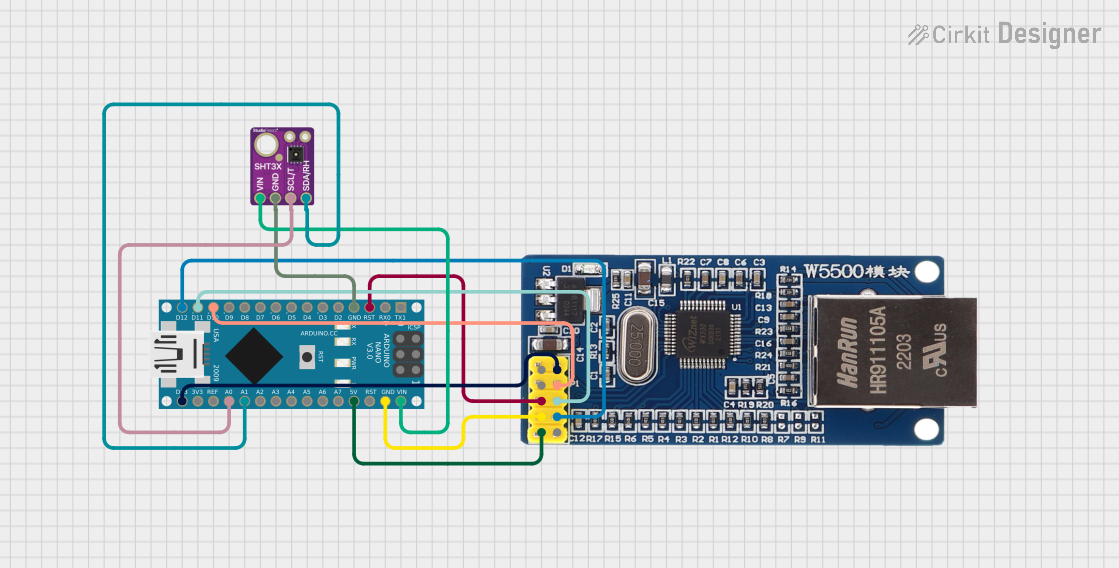
 Open Project in Cirkit Designer
Open Project in Cirkit Designer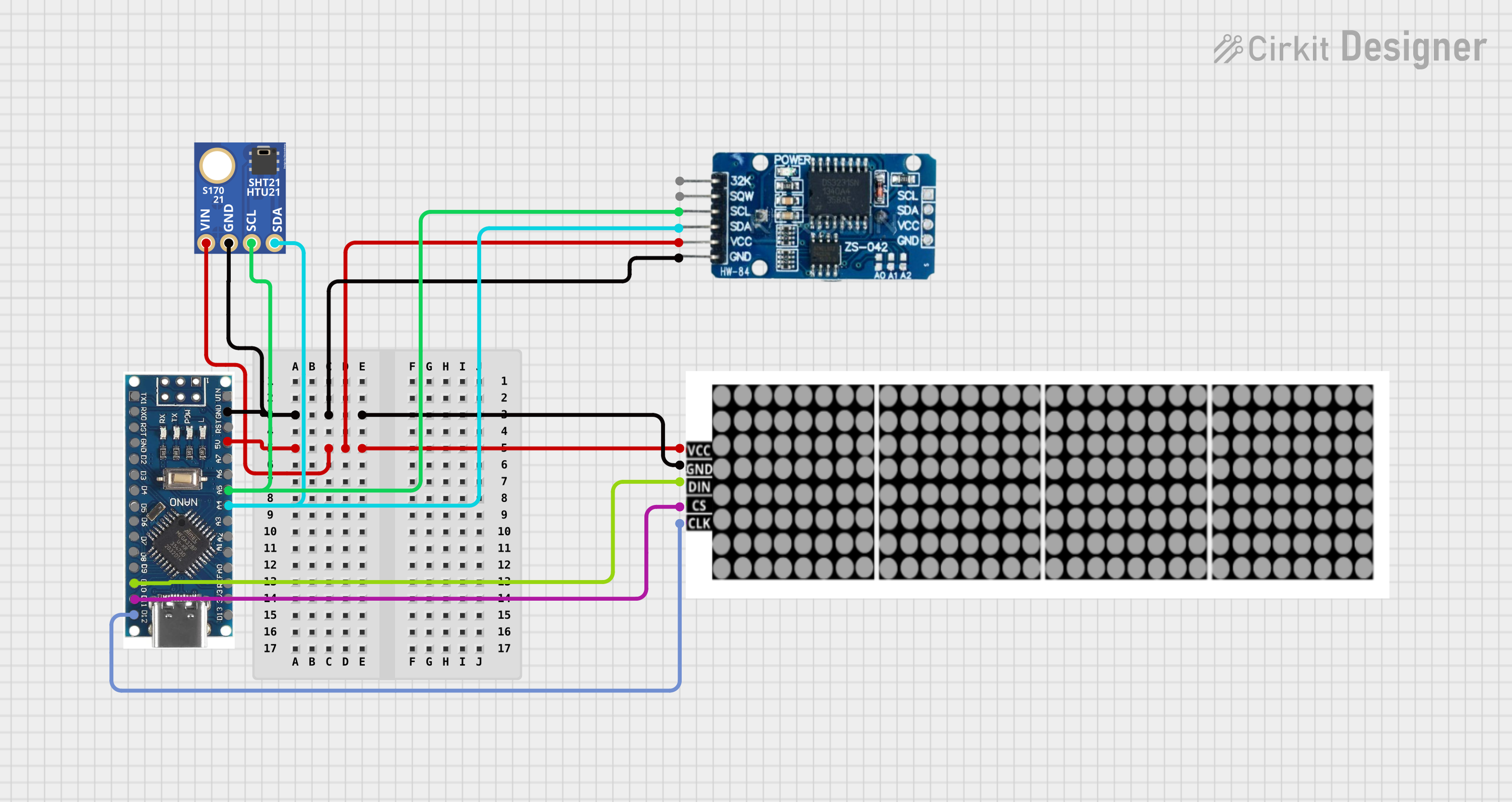
 Open Project in Cirkit Designer
Open Project in Cirkit Designer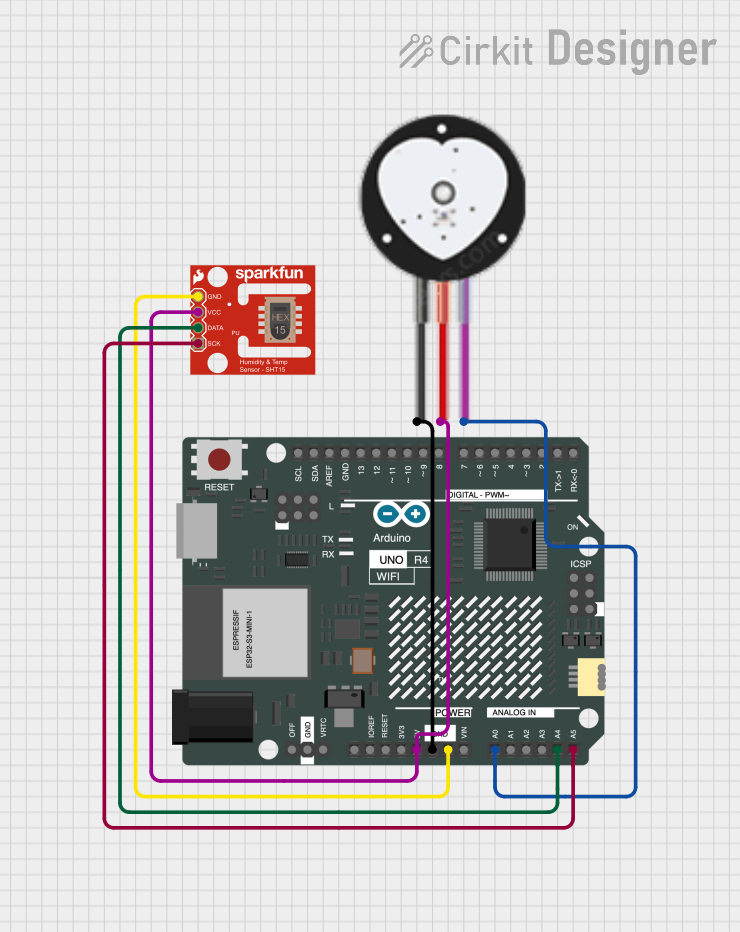
 Open Project in Cirkit Designer
Open Project in Cirkit Designer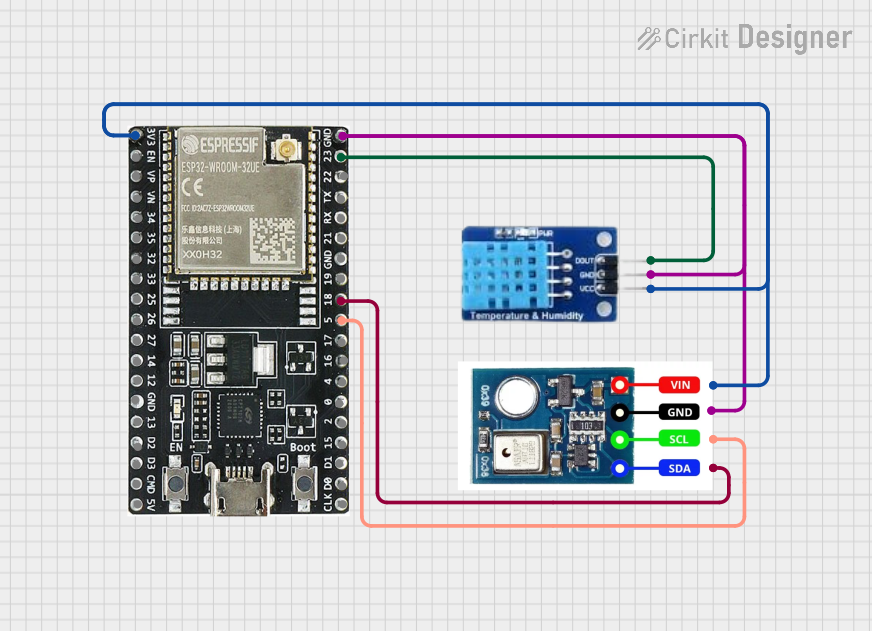
 Open Project in Cirkit Designer
Open Project in Cirkit DesignerExplore Projects Built with SHT40

 Open Project in Cirkit Designer
Open Project in Cirkit Designer
 Open Project in Cirkit Designer
Open Project in Cirkit Designer
 Open Project in Cirkit Designer
Open Project in Cirkit Designer
 Open Project in Cirkit Designer
Open Project in Cirkit DesignerCommon Applications
- HVAC (Heating, Ventilation, and Air Conditioning) systems
- Weather stations and environmental monitoring
- IoT (Internet of Things) devices
- Smart home automation
- Industrial process control
- Consumer electronics (e.g., smart thermostats)
Technical Specifications
The SHT40 is a high-performance sensor with the following key specifications:
| Parameter | Value |
|---|---|
| Supply Voltage (VDD) | 1.08 V to 3.6 V |
| Average Current Consumption | 0.4 µA (at 1 measurement per second) |
| Measurement Range (Humidity) | 0% RH to 100% RH |
| Measurement Range (Temp.) | -40°C to +125°C |
| Accuracy (Humidity) | ±1.8% RH (typical) |
| Accuracy (Temperature) | ±0.2°C (typical) |
| Communication Interface | I²C |
| I²C Address | 0x44 (default) or 0x45 (alternate) |
| Dimensions | 1.5 mm x 1.5 mm x 0.5 mm |
Pin Configuration and Descriptions
The SHT40 has four pins, as described in the table below:
| Pin Name | Pin Number | Description |
|---|---|---|
| VDD | 1 | Power supply (1.08 V to 3.6 V) |
| GND | 2 | Ground |
| SDA | 3 | I²C data line |
| SCL | 4 | I²C clock line |
Usage Instructions
How to Use the SHT40 in a Circuit
- Power Supply: Connect the VDD pin to a power source (1.08 V to 3.6 V) and the GND pin to ground.
- I²C Communication: Connect the SDA and SCL pins to the corresponding I²C data and clock lines of your microcontroller. Use pull-up resistors (typically 4.7 kΩ) on both SDA and SCL lines.
- Bypass Capacitor: Place a 100 nF capacitor close to the VDD and GND pins to stabilize the power supply.
- Address Selection: The default I²C address is 0x44. If using multiple SHT40 sensors, configure the alternate address (0x45) as per the datasheet.
Important Considerations and Best Practices
- Avoid exposing the sensor to extreme conditions (e.g., high humidity or temperature) for prolonged periods.
- Ensure proper PCB layout to minimize noise on the I²C lines.
- Use a protective cover or filter to shield the sensor from dust and contaminants in harsh environments.
- Calibrate the sensor if required for critical applications.
Example Code for Arduino UNO
Below is an example of how to interface the SHT40 with an Arduino UNO using the I²C protocol. This code uses the Adafruit SHT4x library.
#include <Wire.h>
#include "Adafruit_SHT4x.h"
// Create an instance of the SHT4x sensor
Adafruit_SHT4x sht4 = Adafruit_SHT4x();
void setup() {
Serial.begin(9600); // Initialize serial communication
while (!Serial) delay(10); // Wait for the serial monitor to open
// Initialize the SHT40 sensor
if (!sht4.begin()) {
Serial.println("Failed to find SHT40 sensor!");
while (1) delay(10); // Halt if sensor initialization fails
}
Serial.println("SHT40 sensor initialized!");
// Set the precision mode (optional)
sht4.setPrecision(SHT4X_HIGH_PRECISION);
Serial.println("High precision mode set.");
}
void loop() {
sensors_event_t humidity, temp;
// Perform a measurement
if (!sht4.getEvent(&humidity, &temp)) {
Serial.println("Failed to read data from SHT40!");
return;
}
// Print temperature and humidity readings
Serial.print("Temperature: ");
Serial.print(temp.temperature);
Serial.println(" °C");
Serial.print("Humidity: ");
Serial.print(humidity.relative_humidity);
Serial.println(" %");
delay(1000); // Wait 1 second before the next reading
}
Troubleshooting and FAQs
Common Issues and Solutions
Sensor Not Detected on I²C Bus:
- Ensure the SDA and SCL lines are correctly connected to the microcontroller.
- Verify that pull-up resistors (4.7 kΩ) are present on the I²C lines.
- Check the sensor's power supply voltage (1.08 V to 3.6 V).
Incorrect Readings:
- Ensure the sensor is not exposed to condensation or contaminants.
- Verify that the sensor is operating within its specified temperature and humidity range.
- Check for noise or interference on the I²C lines.
Arduino Code Fails to Compile:
- Ensure the Adafruit SHT4x library is installed in the Arduino IDE.
- Verify that the correct board and port are selected in the Arduino IDE.
FAQs
Q: Can I use the SHT40 with a 5V microcontroller?
A: Yes, but you must use a level shifter to step down the I²C voltage levels to the sensor's operating range (1.08 V to 3.6 V).
Q: How do I protect the sensor in harsh environments?
A: Use a protective filter or housing to shield the sensor from dust, water, and contaminants.
Q: What is the typical response time of the SHT40?
A: The typical response time is 8 seconds for humidity and 2 seconds for temperature, depending on airflow and environmental conditions.